How to scare with intent from six feet away
By David Jones
2020 is giving haunters a wonderful opportunity to birth novel ways of telling our stories. In this article, based on my HAuNT Connect presentation and workshop, we’ll explore effective methods of scaring from a distance. Specifically, you’ll learn how to create a cohesive character that does three things:
- Evokes a specific fear.
- Creates rapport with guests.
- Stimulates unanswered questions in the minds of your guests.
Key Takeaways:
- The story of your haunt must be a hero’s quest—with the guest as the hero.
- A haunt is a dramatic tragedy that guests participate in.
- Monsters already exist in the guest’s psyche, so the job of the haunter is to evoke that fear.
- Create a relationship between the guest and the monster.
- Make your monsters specific and intentional to evoke a genuine fear.
- Your monsters must fit your fear culture.
- Define your monster’s motivation and how this leads to consequences.
- The monster’s movements and appearance are critical.
- Create questions your guests can’t answer.
- Write stories to your guests’ deepest fears.
Often when I go through a haunt with professional haunters, I ask them this question 10 minutes after we exit: “Can you describe one character you saw in that haunt?” Usually, the silence is deafening, and that terrifies me as a haunter. We put so much money, labor, sweat, blood, and tears into our haunt—not just the owners, managers, and designers, but the actors and everyone else. To have that disappear from people’s minds as soon as they walk out of our haunt is criminal.
So, what we will talk about is how to create an experience that stays in your guests’ consciousness and how to create monsters that will continue to live in their minds from then on.

There Are Two Kinds of Stories
Every haunt is a variation of the hero’s journey—either a retelling of the story of Orpheus descending into Hades or a variation of the Joseph Campbell monomyth hero’s journey (IE Star Wars narrative). These are universal stories, and we want to make each of our guests the hero. It’s their story, not yours. You’re creating a scenario in which they take part in an epic quest—to survive your haunt. You want them to experience the full hero’s journey until they reemerge into the world of the living. When they do, they have implicit knowledge and secret wisdom of how to overcome 15-foot spiders or rabid, killer, psycho clowns. The experience has changed them.
What is a Haunt?
A simple definition of a haunt is it’s a dramatic tragedy. We lock a haunt. It can’t be changed. The origin of the tragedy is the basis for your story—a meteorite struck, the monsters got loose, the guy with the chainsaw didn’t take his meds—but’s it’s always a tragedy. It’s also big. It takes up a lot of head space. It’s not something guests merely observe and proceed forward without acknowledging or processing. That’s the drama part. We’re telling an important story, not just creating a diversion or an escape. Guests are experiencing something profound that they must then process.
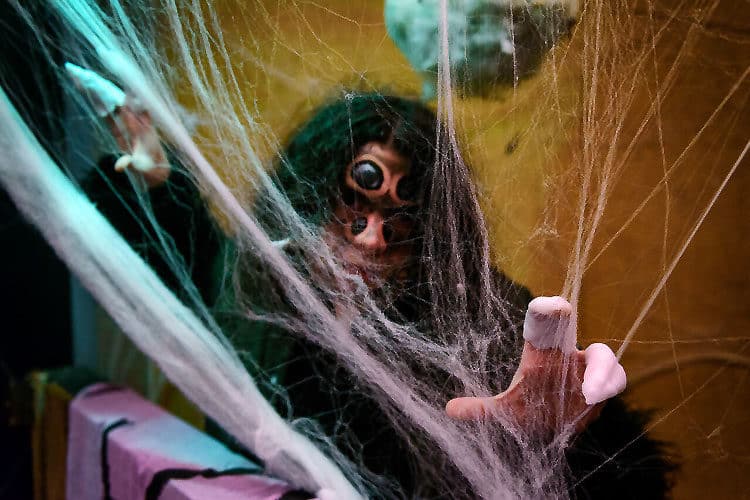
What Makes a Monster a Monster?
In a haunt, we have 1.5 seconds to convey backstory, intent, and relationship between the guests and the monster. Monsters must be real and believable. If they are, they already live in the guest’s psyche. To create a brand-new monster that a guest has never encountered before requires a lot of backstory, so all the monsters we commonly use already exist in our guests’ brains. They either come from genetic programming (primal fears) or from cultural stories we’ve grown up with—movies, folklore, family tales, or individual traumatic experiences that create our own internal, personal monsters.
Haunts create stories that affect the sub-cortical amygdala and the cortex, which are the primitive and executive parts of the brain. Information comes into the thalamus, goes into the cortex and then the amygdala, which talks to the hippocampus. This activates fight/flight/freeze and releases adrenaline and hormones. All of this takes place a half a second before the cortex registers what’s going on. The amygdala recognizes the source of the threat—it’s seen this monster before—and immediately creates a response in the body. A half second later, the cortex sees the threat and believes it’s deciding, but that response is determined by the amygdala, which has taken over. These are the beginning symptoms of shock, and it makes it difficult for us to think.
The monster must be present in the mind so that when it’s evoked, the guest is already in the story, in the drama, in the fear. The amygdala and subcortical processes of the brain recognize the source of fear and flood the body with testosterone and adrenaline, putting the individual in flight/fight/freeze mode. This happens even before the cortex recognizes the nature of the fear.
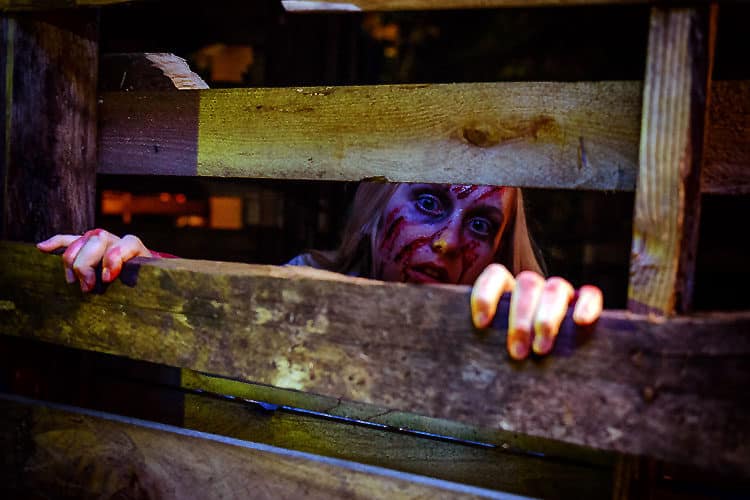
Monsters Live Inside Our Heads
Once we’re in flight/fight/freeze mode, we respond without thinking. We’re operating on genetic and experiential patterns that have kept us, or our species, alive. We experience what we define as “now” at least half a second after it happens. The cortex then attaches meaning, intent, and motivation.
When you write your story, you’re writing two scripts—one to the amygdala and one to the cortex. The job of the cortex is to be logical, create sense, and to make connections that work thematically. The amygdala tells the brain that something is real, is happening now, and that the threats should not be ignored, or the amygdala will take over. The monster is already in the amygdala as primal terrors such as fear of snakes, spiders, etc. It’s possible to override some of these genetic bonds, because there are people who have snakes and spiders as pets. On a primitive level, all primates react with fear when the amygdala is triggered by movement or inhuman actions.
Monsters are malleable. We can change their characteristics. The monster we have in our head isn’t necessarily the monster from our history. A memory isn’t the same as the original incident and, every time we bring forth a memory, we mutate it slightly. We do this deliberately in haunts.
Another definition of a monster is a hero that becomes a victim during his or her journey. They’re bitten by a vampire or suffer some terrible disfigurement that alienates them from their loved one or their family or their community. It’s their lack of inability to find love or acceptance that causes them to behave monstrously.

Create A Relationship Between the Guest and the Monster
A haunter’s task is to recreate their own version of the dramatic tragedy and develop an experience that will live on in your guests’ brains. To do this, it’s necessary to create a relationship between the guest and the monster. The rule of comedy is three, but the rule of horror is two. We see this both in the relationship between the monster and the victim and in every dyad within the haunt.
Our task is to create a relationship between the monster and the hero (your guest). Monsters are always tragic. They’re always the victim. Monsters can’t move on; they can’t get out of the predicament they’re in. And we identify with the monster. That’s why we love monster movies when we’re little kids. Ishiro Honda said, “Monsters are tragic beings.” They’re born too tall, too strong, or whatever, and they’re not evil by choice. That’s their tragedy. The monster is suffering and trying to heal themselves, and it’s their inability to do so that makes them monstrous.
Dracula is caught in a loop pining for the love of a girl lost forever. Frankenstein’s rage is that of a child who failed by their parent. His is also a story of hubris—what happens when you try to reanimate the dead. The werewolf is the isolated individual suffering from feelings of alienation, being separated and shunned both by animal and human. The mummy was a living God who walked this earth and controlled a dynasty and now trapped in this cage of crumbling, barely mobile flesh and looking for his lost love.
Every child loves Godzilla, because Godzilla gets yelled at for the same reasons a child does. That’s why children love dinosaurs and other gigantic creatures. Create that relationship.
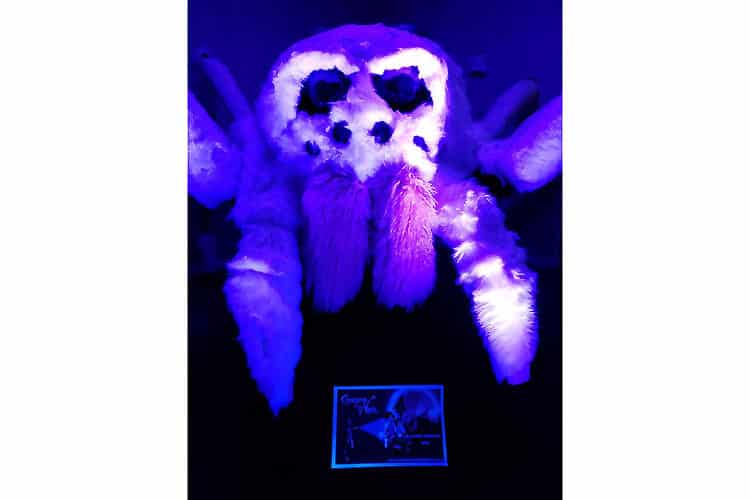
Make Your Monsters Specific and Intentional to a Real Fear
Your monsters must be specific and intentional because they represent a genuine fear. For a long time, we associated vampires with a fear of rabies. Before we understood diseases scientifically, we saw vampires as the result of being infected with rabies, tuberculosis, or other diseases. They had a specific intent and a specific inflection. We choose the monsters for our scenes—and the order in which they appear—for a specific reason, which is the fear they induce and the consequences of that fear.
The aim of your story is to raise tension, deliver the exposition, and then release the tension. Remember, any generality in art is dangerous. Nonspecific monsters that don’t relate to your story and guests’ fears disappear from your guests’ minds in 15 seconds as they go through your haunt, because they need to pay attention to one new threat after another. If there’s no reason for your guests’ minds to hold on to that monster, then it’s dumped from their memory.
When we’re in survival mode, we require our brain to dispense with old threats as each new threat or stimulation appears. So, your monster must be specific, there must be a reason for it being in the scene, and it must have a relationship with your guests.
Your Monsters Must Fit Your Fear Culture
Ask yourself what purpose the monsters—and they can be human monsters—serve in your scenes and make sure they represent the greater story. And your greater story should reflect the fears of the community where your haunt is located and the culture of horror in that location. If your haunt is in Thailand, you’d better include the Yaksha, the giant ogres that lurk around the Thai Royal Palace. If your haunt is in Algonquin territory in Eastern Canada, you’ll want to include the Wendigo, an evil spirit that survives on human flesh. In Hawaii and Polynesian cultures, the octopus is the focus on fear, because we know the octopus as the survivor of a universe that was destroyed, came to earth, and is the most alien mind on this planet. In the US Southwest, La Llorona is a prevalent source of terror in the Hispanic culture.
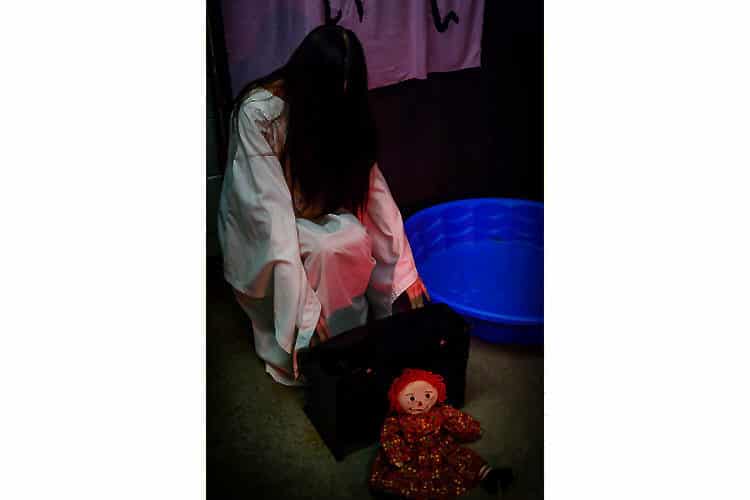
Your Monster’s Movements and Appearance Are Critical
Make sure your actors use conscious and unconscious gestures to convey their characters. This makes them memorable. One way to do this is to hallmark previous moments in your monster’s life. Before they were a monster, what were they? Were they a doctor? Were they a politician? Were they a mom or a dad? Does your vamp or werewolf unconsciously pick up a pen and click it three times like a doctor does when preparing to write a prescription? Have your monster mimic the behavior of what they were before their transformation. The brain picks up on these subtle clues, these habitual movements, and these make the character real in our mind. We then pay attention and ask ourselves why they’re doing what they’re doing or showing a certain behavior.
If your monster’s insecure, have them constantly rubbing their hands together. Fully inhabit your character’s body—it’s weightiness, it’s cadence. You can have monsters that are ethereal and flowing, moving like ballet dancers. Monsters that attack through magic or psychically often exhibit this kind of movement, whereas those that attack physically have enormous claws and their bodies have sharp angles. The brain recognizes these characteristics as different threats and therefore different monsters.
We connect a monster to the fixed functions of its anatomy; it should have no useless parts. If the monster has legs, antenna, or claws, they need to move. By keeping all its parts moving, you’re constantly telegraphing how authentic and real this monster is. Also, make sure anything your monster does has a motivation and a purpose. If it’s enraged or posturing, you need to have a reason for that. A slight head tilt is a subtle way to convey the difference between a victim and a monster. If the monster’s face has a flat affect as it stares at guests, and then its head moves downward 10 degrees, we perceive dominance or aggression. We read an upward tilt of the head to the same degree as submissive or receptive. That slight change in head position—which our brain notices—changes the character from a monster to a victim.
Being watched or stared at by a monster is amazingly intimidating. The same effect can happen in a Zoom meeting. When we’re staring at the faces of 30 people, and they’re all staring at back at us, we’re far less likely to ask questions or make comments.
At six or more feet away, animatronics are less effective, because their movements are less convincing to our subcortical systems. This year, the faces of real actors connecting to guests is an excellent strategy, especially if guests discover they’ve been under observation for a time before they notice they’re being watched. The overwhelming majority of senior haunters have told me repeatedly this is the scare that “got them.”
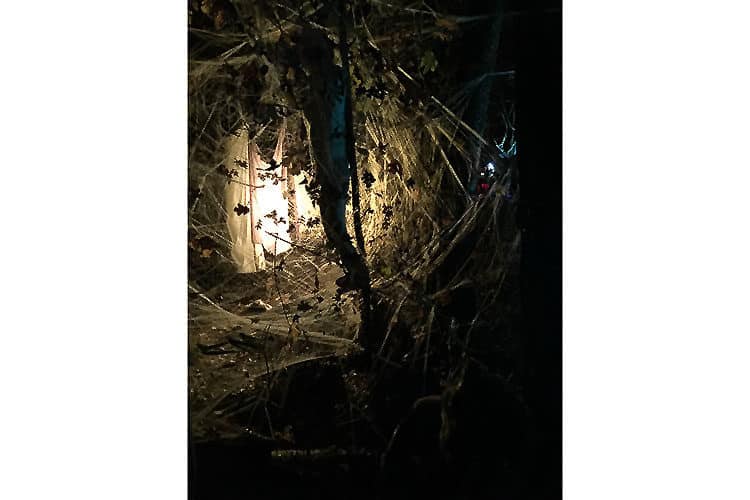
Create Questions Your Guests Can’t Answer
We want to create questions in the minds of our guests that they can’t answer. Just as a boo scare will erase your monster from a guests’ minds, creating fully dynamic characters will increase the probability of implanting a question that will live on in their psyche.
For example, say you have Dracula in a scene in your haunt, and behind him is a painting of his beloved. He could gaze at the painting for a few moments and then turn to address one woman in the group of guests who resembles her: “Oh, I have loved you for so long…” he says, and then continues with a monologue about those summers they spent together in Bucharest or whatever. You’ve created a relationship between Dracula and the guest that brings up questions. Why is he talking to her? You could also do this by having a plant among the guests. Some clever haunters gather intel on the guests by listening to them as they go through the haunt. An actor or other staff member may hear a male guest in an early scene say to his female companion, “I sure feel bad we left the kids at home.” The woman responds, “Me, too, John.” The actor radios this to the person playing a monster in a later scene who says to the man when he arrives, “John, you need to go home. There’s a fire, and your children are in danger. Why are you here?” In this way, you get into their head, and that guest will never forget that.
Here are a couple more examples. One year, we had a guy just sweeping between two scary scenes. He was making grumbling sounds as he swept. He didn’t jump out and scare anybody, but guests fixated on him, wondering who he was and what he was going to do. A man sweeping the ground became engrossing. As people left the haunt, they were asking about him and processing it as a group.
Amy Holloway told me about one scene in our haunt last year that really got to her. She and her group walked into a room, and there was a woman standing at a distance—over six feet away—from the guests. The woman’s midriff was bare, and she was rubbing a black goo on her belly. That’s all she did. That’s the scene that stuck with Amy, because it was mysterious. Was it sexual? Did it have to do with reproduction? The scene raised questions the brain could never answer, and that’s what people remember months later. You want characters and scenes that raise questions—which can prompt them to come back to your haunt next year.

Write Stories to Your Guests’ Deepest Fears
It doesn’t matter if we know something is artificial. Certain images will cause our amygdala to react, and the amygdala hijacking symptoms begin as the flood of hormones is released. It’s impossible to override these responses, so that’s why we want to write our stories to them.
The stories and fables we heard in childhood inhabit our mind, so we want to be sure to reflect those in our monsters. Let members of the community where your haunt is located tell you their stories, and you’ll discover their deepest fears. You then present those to your guests, and this gives them an agreed-upon framework to talk about and process as a group.
This year, regardless of all our planning, there’s a chance our haunt might not happen. Whether we’re 60 or 30 days away from our planned opening, things can change, so we need to prepare to be adaptable.
In this new storytelling environment, one way to prepare this year is to do beta testing of your haunt through a family-and-friends night to get feedback. So, be creative in your storytelling, make sure your monsters are real, and then test out your haunt before you open.